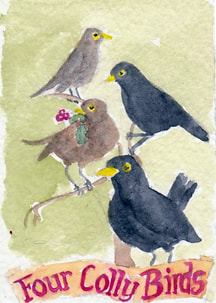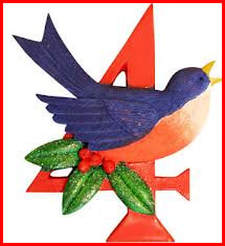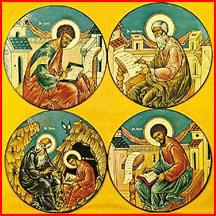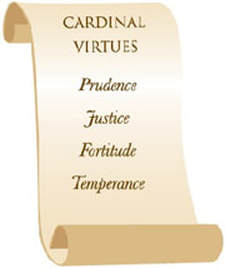| Devotion to Our Lady |
|
- Homepage
-
Daily Thoughts
- 2023 October Daily Thoughts
- Daily Thoughts Lent 2020
- Daily Thoughts for Advent 2019
- Daily Thoughts for October 2019
- Daily Thoughts for September 2019
- Daily Thoughts for August 2019
- Daily Thoughts for July
- Daily Thoughts for June
- Daily Thoughts for Easter 2019
- Daily Thoughts for Lent 2019
- Daily Thoughts for Christmas
- Daily Thoughts Easter 2022
- Sacred Heart
- Holy Ghost
-
Spiritual Life
- Holy Mass Explained
- First Friday Devotions
- First Saturday Devotions
- The Mercy of God
- Vocations
- The Path Everyone Must Walk >
- Gift of Failure
- Halloween or Hell-O-Ween?
- Ignatian Spiritual Exercises >
- Meditation is Soul-Saving
- Spiritual Communion
- Miraculous Medal
- Enrollment in Miraculous Medal
- St. Benedict Medal
- Holy Water
- Advice on Prayer
- Your Daily Mary
-
Prayers
- September Devotions
- Seven Sorrows of Our Lady
-
Novenas
>
- NV-Help of Christians
- NV-Nativity of Our Lady
- NV-Seven Sorrows
- NV- Sorrowful Heart
- NV-Pope St Pius X
- NV-La Salette
- NV-St Michael Archangel
- NV-Immaculate Heart
- NV-Assumption
- NV-Novena for Fathers
- NV-Novena for Your Mother
- NV-St Raphael Archangel
- NV-Souls in Purgatory
- NV-All Saints Day
- NV-Christ the King
- NV-Divine Motherhood
- NV-Guardian Angels
- NV-Rosary
- NV-Mirac Med
- NV- Imm Conc
- NV - Guadalupe
- NV - Nativity of Jesus
- NV-Epiphany
- NV-OL Good Success
- NV-Lourdes
- NV-St Patrick
- NV-St Joseph
- NV-Annunciation
- NV-St Louis de Montfort
- NV-OL Good Counsel
- NV-Last Supper
- NV-Passion
- NV-Pentecost
- NV-Ascension
- NV-Sacred Heart
- NV-Sacred Heart & Perpetual Help
- NV-Corpus Christi
- NV-OL of Perpetual Help
- NV-Queenship BVM
- NV-OL of Mount Carmel
- NV-St Mary Magdalen
- NV- Im Hrt
- August Devotions to IHM
- Immaculate Heart of Mary
- Litany of Dependence
- Prayers to St Mary Magdalen
- Prayers in Times of Sickness Disease & Danger
- Holy Souls in Purgatory
- Meditations on the Litany of Our Lady
- Special Feast Days
- Prayers to Mary (Mon-Sun)
- Litanies to Our Lady >
- Various & Special Needs
- Our Lady of the Rosary
- Our Lady of Mt. Carmel
- Our Lady of Perpetual Help
- Our Lady of Guadalupe
- Other titles of Our Lady
-
Rosary
- Downloads
- Consecration
- Easter Season
-
Holy Week
- Last Seven Words of Jesus >
- Characters of Passion >
- The Last Days of Christ
- Before Palm Sunday
- Palm Sunday
- Monday in Holy Week
- Tuesday in Holy Week
- Wednesday in Holy Week
- Holy Thursday (Last Supper)
- Holy Thursday (Agony & Arrest)
- Night Vigil with Christ
- Good Friday (Pilate & Herod)
- Good Friday (Way of Cross & Crucifixion)
- Saturday in Holy Week
-
Lent
- Ideas for Lent
- Daily Lenten Planner
- Daily Lenten Liturgy
- From Cold to Hot
- Lent with Aquinas
- Lent with Dom Gueranger
- Virtues for Lent
- History of Penance
- How Expensive is Sin?
- Confession of Sins
- Letter to Friends of the Cross
- Sermons for Lent
- Stations of the Cross >
- Lenten Prayers
- 7 Penitential Psalms
- Lenten Psalms SUN
- Lenten Psalms MON
- Lenten Psalms TUE
- Lenten Psalms WED
- Lenten Psalms THU
- Lenten Psalms FRI
- Lenten Psalms SAT
- Lenten Laughs
- Septuagesima
-
Christmas
- Epiphany Explained
- Suggestions for Christmas
- Food For Thought
- Christmas with Aquinas
- Christmas with Dom Gueranger
- Christmas Prayers
- Candles & Candlemas
- Christmas Sermons
- Christmas Prayers SUN
- Christmas Prayers MON
- Christmas Prayers TUE
- Christmas Prayers WED
- Christmas Prayers THU
- Christmas Prayers FRI
- Christmas Prayers SAT
- Twelve Days of Christmas >
-
Advent Journey
- Purgatory
- Christ the King
- Legion of Mary
- Scapular
-
Saints
-
Martyrs for the Faith
>
- Your Daily Martyr >
- All 365 Days of Martyrs
- Cristeros
- St Valentine & Valentine's Day
- Martyrs--Thomas Becket
- Martyrs--John the Apostle
- Holy Machabees
- Age of Martyrdom
- Carmelites of Compiegne
- Martyrs--Peter & Paul
- Martyrs--John the Baptist
- Martyrs--Andrew
- Martyrs--James the Great
- Martyrs--North American
- Martyrs--Seven Holy Sleepers
- Martyrs--Afra
- School of Martyrdom
- Martyrs--Christina
- Desert Saints >
- Saints for Sinners >
- Saints of Mary >
- History of All Saints Day
-
Martyrs for the Faith
>
- Precious Blood
- Synod 2023
-
Catechism
- Catechism Lesson 1
- Catechism Lesson 2
- Catechism Lesson 3
- Catechism Lesson 4
- Catechism Lesson 5
- Catechism Lesson 6
- Catechism Lesson 7
- Catechism Lesson 8
- Catechism Lesson 9
- Catechism Lesson 10
- Catechism Lesson 11
- Catechism Lesson 12
- Catechism Lesson 13
- Catechism Lesson 14
- Catechism Lesson 15
- Catechism Lesson 16
- Catechism Lesson 17
- Catechism Lesson 18
- Catechism Lesson 19
- Catechism Lesson 20
- Catechism Lesson 21
- Catechism Lesson 22
- Bible Study
-
Calendar
- Miracles
- Apparitions
- Shrines
- Prophecies
- Angels Homepage
- Hell
-
Church Crisis
- Conspiracy Theories
- Amazon Synod 2019 >
- Liberalism & Modernism
- Modernism--Encyclical Pascendi
- Modernism & Children
- Modernism--Documents
- The Francis Pages
- Church Enemies on Francis
- Francis Quotes
- Amoris Laetitia Critique
- Danger of Ignorance (Pius X)
- Restore all In Christ (Pius X)
- Catholic Action (Pius X)
- Another TITANIC Disaster?
- The "Errors of Russia"
- CRISIS PRAYERS
- Election Novena 2024
- The Anger Room
- War Zone
- Life of Mary
- Spiritual Gym
- Stupidity
- Coronavirus and Catholicism
- History & Facts
- Books
- Catholic Family
- Children
- Daily Quiz
-
Novena Church & Pope
- Day 01 Church-Pope Novena
- Day 02 Church-Pope Novena
- Day 03 Church-Pope Novena
- Day 04 Church-Pope Novena
- Day 05 Church-Pope Novena
- Day 06 Church-Pope Novena
- Day 07 Church-Pope Novena
- Day 08 Church-Pope Novena
- Day 09 Church-Pope Novena
- Day 10 Church-Pope Novena
- Day 11 Church-Pope Novena
- Day 12 Church-Pope Novena
- Day 13 Church-Pope Novena
- Day 14 Church-Pope Novena
- Day 15 Church-Pope Novena
- Day 16 Church-Pope Novena
- Day 17 Church-Pope Novena
- Day 18 Church-Pope Novena
- Day 19 Church-Pope Novena
- Day 20 Church-Pope Novena
- Day 21 Church-Pope Novena
- Day 22 Church-Pope Novena
- Day 23 Church-Pope Novena
- Day 24 Church-Pope Novena
- Day 25 Church-Pope Novena
- Day 26 Church-Pope Novena
- Day 27 Church-Pope Novena
- Day 28 Church-Pope Novena
- Day 29 Church-Pope Novena
- Day 30 Church-Pope Novena
- Day 31 Church-Pope Novena
- Day 32 Church-Pope Novena
- Day 33 Church-Pope Novena
- Day 34 Church-Pope Novena
- Day 35 Church-Pope Novena
- Day 36 Church-Pope Novena
- Day 37 Church-Pope Novena
- Day 38 Church-Pope Novena
- Day 39 Church-Pope Novena
- Day 40 Church-Pope Novena
- Day 41 Church-Pope Novena
- Day 42 Church-Pope Novena
- Day 43 Church-Pope Novena
- Day 44 Church-Pope Novena
- Day 45 Church-Pope Novena
- Day 46 Church-Pope Novena
- Day 47 Church-Pope Novena
- Day 48 Church-Pope Novena
- Day 49 Church-Pope Novena
- Day 50 Church-Pope Novena
- Day 51 Church-Pope Novena
- Day 52 Church-Pope Novena
- Day 53 Church-Pope Novena
- Day 54 Church-Pope Novena
- Penance Novena
- Daily WeAtheR Forecast
CLICK ON ANY CHRISTMAS LINK BELOW
(most links are available now, the other links will activated shortly)
TWELVE DAYS OF CHRISTMAS
| 12 Day Homepage | 1st Day of Christmas | 2nd Day of Christmas | 3rd Day of Christmas |
| 4th Day of Christmas | 5th Day of Christmas | 6th Day of Christmas | 7th Day of Christmas
| 8th Day of Christmas | 9th Day of Christmas | 10th Day of Christmas | 11th Day of Christmas | 12th Day of Christmas |
PRAYING THE PSALMS THROUGH CHRISTMAS
| Sundays | Mondays | Tuesdays | Wednesdays | Thursdays | Fridays | Saturdays |
SPIRITUAL READING THROUGH CHRISTMAS
| St. Thomas Aquinas on Christmas | Dom Gueranger on Christmas |
(most links are available now, the other links will activated shortly)
TWELVE DAYS OF CHRISTMAS
| 12 Day Homepage | 1st Day of Christmas | 2nd Day of Christmas | 3rd Day of Christmas |
| 4th Day of Christmas | 5th Day of Christmas | 6th Day of Christmas | 7th Day of Christmas
| 8th Day of Christmas | 9th Day of Christmas | 10th Day of Christmas | 11th Day of Christmas | 12th Day of Christmas |
PRAYING THE PSALMS THROUGH CHRISTMAS
| Sundays | Mondays | Tuesdays | Wednesdays | Thursdays | Fridays | Saturdays |
SPIRITUAL READING THROUGH CHRISTMAS
| St. Thomas Aquinas on Christmas | Dom Gueranger on Christmas |
THE CONTROVERSY OVER THE SONG "THE TWELVE DAYS OF CHRISTMAS"
In the last 20 or so years, there has been quite a bit of controversy over the song The Twelve Days of Christmas. Some say it was a cryptic catechism song, used by the persecuted Catholics of England as a means to teach their children some rudimentary teachings of the Faith under the disguise of a seemingly harmless song. Others contest this, by saying that there is no evidence to back-up this claim and say that the alleged points of doctrine to be found hidden in the song, are ... (click here to read more)
"...Four Colly Birds"
|
AND STILL EVEN MORE BIRDS!
Now it is birds for four days in a row! Partridge, Turtle Doves, Hens and now the mysterious "Colly" Birds! What on earth are "Collly Birds" WATCH YOUR LANGUAGE! The modern version of "Four Calling Birds" in this stanza, is due to a mix up between the English language as spoken in the sixteenth and seventeenth centuries and the English spoken today. It could also be due to a mix up between English as spoken in England and English as spoken in England’s former colonies, particularly the United States and Australia. When they get to this stanza many people may wonder just what is a "calling bird". Most probably just assume that it is the name used in past centuries for one of our common birds that goes by a different name today. It’s "Colly Birds", not “Calling Birds” The verse," four calling birds", is actually a corruption of the English word "colly" or "collie" . So, we are referring to four "colly" birds or four "collie" birds (the words to the song were probably written before the creation of the dictionary, so the spelling of old words tends to be flexible). WHAT ARE "COLLY BIRDS"? What is a colly bird? “Colly” is an old English word for the color black. Similar to the word "coal", and we have all heard of the saying "as black as coal." So “Colly Birds” are really blackbirds. In England a coal mine is called a colliery; and colly or collie is a derivation of this and means black like coal. So colly bird is a black bird.For a long time in England, blackbirds have been referred to as both "blackbirds" (as in the nursery rhyme Sing a Song of Sixpence) and "colly birds" as in The Twelve Days of Christmas. Even in Tudor England these birds went by two different names, so it is not so unusual that there would be some confusion three centuries and a couple of continents later. While the name blackbird migrated beyond England, the name collie bird remained behind in England, where, even there, it tended to diminish in use over the centuries. Today, many published versions of the song in the U.S. and Australia give the birds’ name as "calling birds" rather than "collie birds". WHAT A SILLY GIFT! Maybe in the eyes of the modern-day person, but not the eyes of those who lived in earlier centuries! As to why the person in the song would give his true love a gift of blackbirds, the answer is that this would have been another gift of food. Which fits well with the idea that God is feeding us by His Divine Providence. He feeds the birds of the air and he feeds us with birds of air! In actual fact, blackbirds were in plentiful supply, they taste very nice and they were very common food in earlier centuries. SYMBOLISM OF BLACK So “Colly Birds” are really blackbirds. Black is a symbol of sin, sorrow and death. Priests wear black as a symbol of having died to the world. We wear black to mourn the death of someone. But spiritual death is worse than physical death, so we also mourn the many souls that have died spiritually through mortal sin. BLACK THE SYMBOL OF SIN We have all heard of the expression: "As black as sin." Actually, black is an absence of all color; while white is the result of combining all colors. Shine a beam of daylight through a prism, and you will see all the colors appear in the prism and shine out of it. Likewise, sin is the absence of the light of God. Mortal Sin is total absence of God, as we shut God and His light out of our soul; whereas Venial Sin is like shutting the blinds or pulling the curtains on God and His light, some gets through, but a lot of it is blocked. BLACK IS THE SYMBOL OF SORROW Black is the universal symbol of sorrow and mourning. The Church uses (or once did use) the color of black in her Requiem Masses and funeral services. Mourners will often wear black in attending these Masses and services, and it is not unusual for people to wear black for quite some time after the death of a loved one, as they grieve and mourn for the departed soul. . We also refer to someone, who we see as being down, sad and unhappy, as "having a black cloud over their head." Of course, for the Catholic, the color black should remind us of having to mourn for our sins. We can invisibly wear the color black in soul by mortifying ourselves from the colorful temptations of the world through worldly fun, worldly pleasure, and worldly ambitions. BLACK IS THE SYMBOL OF DEATH In the natural sphere, black symbolizes the end of life, a natural death, which see a person come to the last day, hour and minute that God has allowed to spend upon this earth, before being called the Judgment Seat of God. It is a reminder to us that we, too, will one day face our final moment in life. Supernaturally, black can symbolize death in several ways. In a bad way, it can symbolize a soul's death to God, through committing mortal sin, or death to God by never having been baptized in the first place at which baptism they also receive a lighted candle which symbolizes Christ the Light of the World having entered the darkness of the unbaptized soul. Black can also symbolize death to sin. St. Dominic Savio, at his first Holy Communion, a motto that said: "Death rather sin!" The Scriptures often to refer to this kind of supernatural death: “As in Adam all die, so also in Christ all shall be made alive” (1 Corinthians 15:22). “Amen, amen I say to you, unless the grain of wheat falling into the ground die, itself remaineth alone. But if it die, it bringeth forth much fruit. He that loveth his life shall lose it; and he that hateth his life in this world, keepeth it unto life eternal” (John 14:24-25). “If then you be dead with Christ from the elements of this world...” (Colossians 2:20). "Now if we be dead with Christ, we believe that we shall live also together with Christ”(Romans 6:8). THE NUMBER FOUR There are many things that the number FOUR can remind us of, here are just a few: The FOUR Evangelists or Gospel writers: St. Matthew, St. Mark, St. Luke and St. John. The FOUR Cardinal Virtues, on which all other hang (cardinal=Latin for hinge): Prudence, Justice, Temperance, Fortitude. The FOUR Sacraments that we can receive more than once: Confession, Communion, Matrimony, Extreme-Unction. The FOUR points of the compass or corners of the world: North, South, East and West that have to be evangelized. THE FOUR EVANGELISTS The blackbird sings beautifully, and so the four blackbirds represent the Four Evangelists (Saints Mathhew, Mark, Luke and John) who sing-out a beautiful Gospel, that calls us out from the death of sin to a death to sin; to a sorrow for sin that leads us through penance, mortification and other virtues to the joys of Eternal Life in Heaven. THE FOUR CARDINAL VIRTUES Thus, the four blackbirds remind us of the four Cardinal Virtues—Prudence, Justice, Temperance and Fortitude—of which all other moral virtues are subsections. PRUDENCE is the virtue that helps us to select, form among many various means, the best means to achieve or attain a particular goal or end. Although there is a human prudence, it is false prudence, because it ignores the ultimate end (God and Heaven) in making to us its recommendations on what means to choose and use. Invariably, what it suggests eliminates or at least relegates the supernatural ends in favor of natural or ends. The true PRUDENCE always takes the supernatural into account whenever it has to sift through available means. JUSTICE is giving to others what is their due: whether it be giving something positive (praise or a reward) or giving something negative (criticism or a punishment). Again, as with Prudence, the supernatural must come first, and we must seek. first of all, to give God what is due to Him: Adoring Him, Loving Him, Thanking Him, Asking Him for all things, and Repairing the damage caused by our sins. "Seek ye therefore first the kingdom of God, and his justice” (Matthew 6:33). Only after we have been just towards God should we place justice towards man. Nowadays, this order has been reversed. We think more about what is owed to us, rather than thinking what we owe God. Likewise the universal preoccupation with the "Rights of Man" while almost totally ignoring the "Rights of God." TEMPERANCE is the virtue that helps us things with moderation according to right reason. In this modern consumer orientated world, temperance is dirty word. We glory in being intemperate: the more the better, the bigger the better, the longer the better, more...more...more is the the cry! Some of the chief sins against the virtue temperance are covetousness, gluttony, drunkenness, lust, anger, excessive pride, etc. Some of the chief virtues that hinge on temperance are the opposites of the above: fasting, abstinence, moderation, generosity, sobriety, purity, meekness and humility. Mortification (a part of Temperance) is the practice of Christian asceticism in order to overcome sin and master our sinful tendencies. Through penance (a part of Justice) we pay for sin, strengthen the will in the practice of virtue and grow in the likeness of Jesus. FORTITUDE is the virtue that is a balance between temerity and rashness on the one hand, and timidity and cowardice on the other hand. Fortitude, like the other Cardinal VIrtues, is focused on the supernatural above the natural. Our fortitude will always be imperfect, and needs to be bolstered by the supernatural fortitude that is one of the seven Gifts of the Holy Ghost. This was the case with the Apostles, who, though not outright cowards, the natural fortitude they had needed the descent of the Holy Ghost at Pentecost to perfect their human fortitude. |
Web Hosting by Just Host





